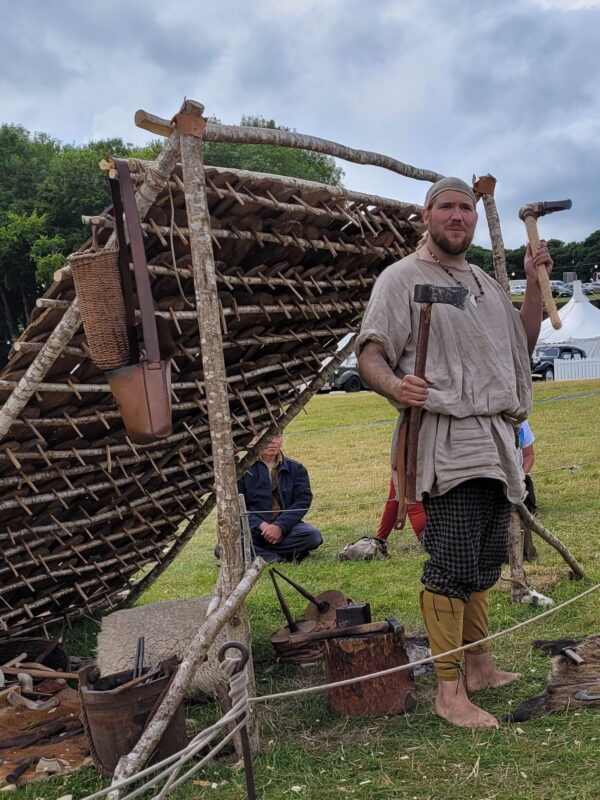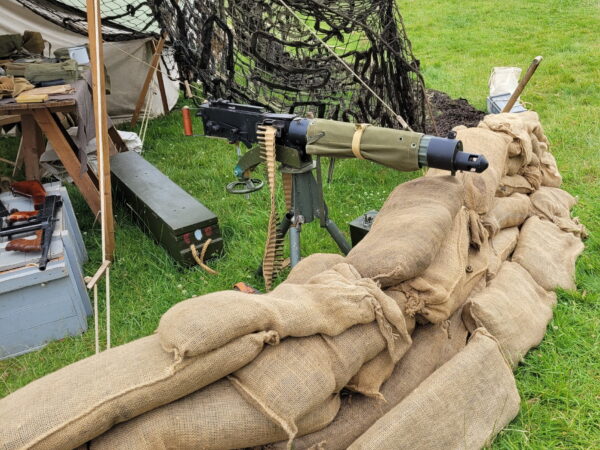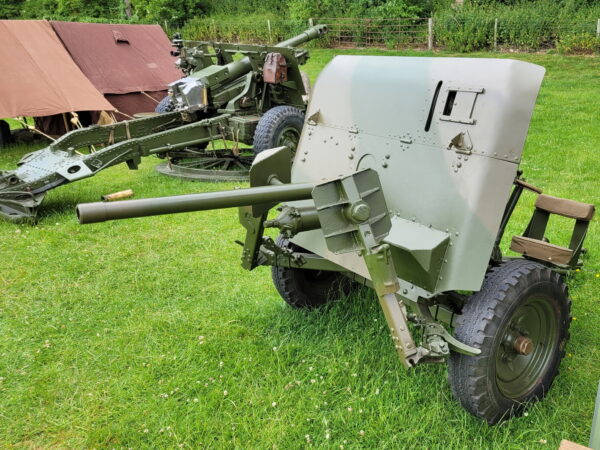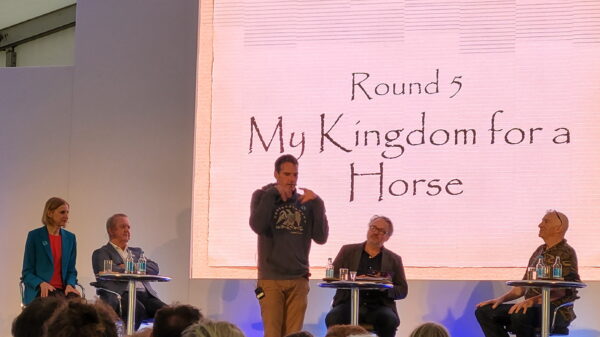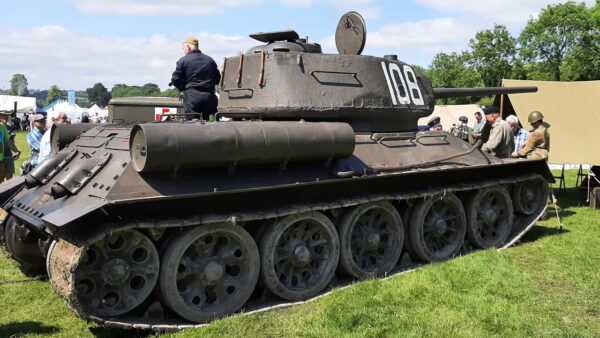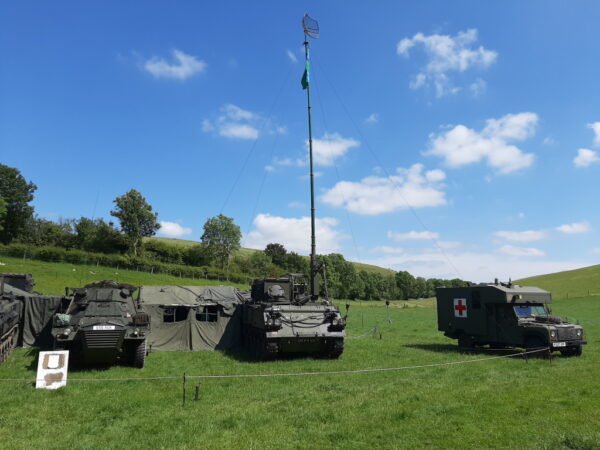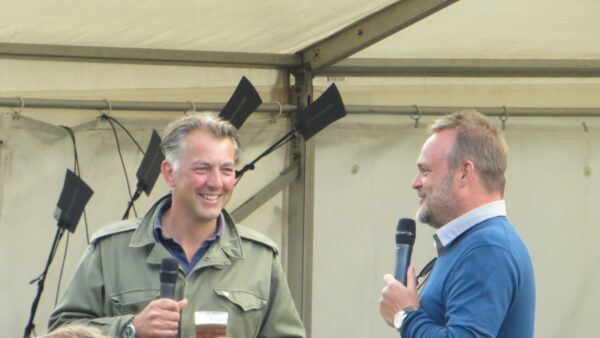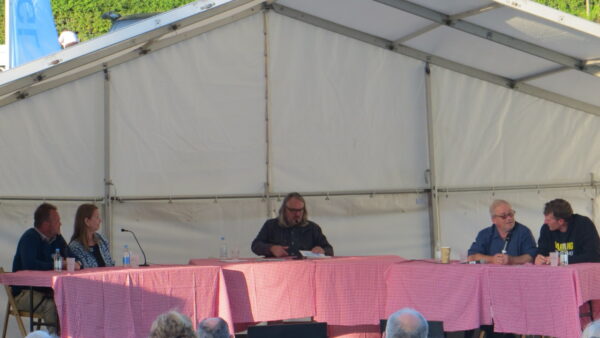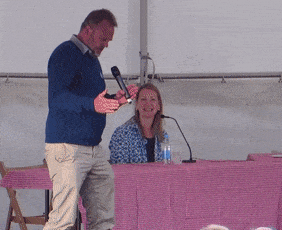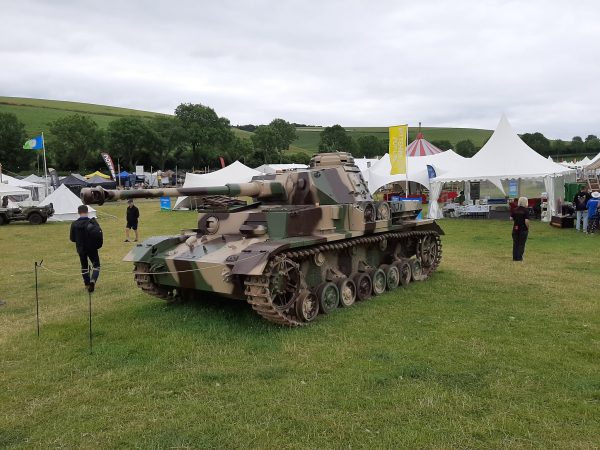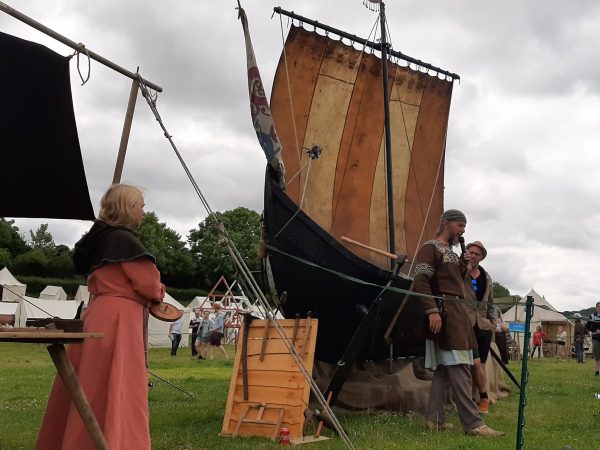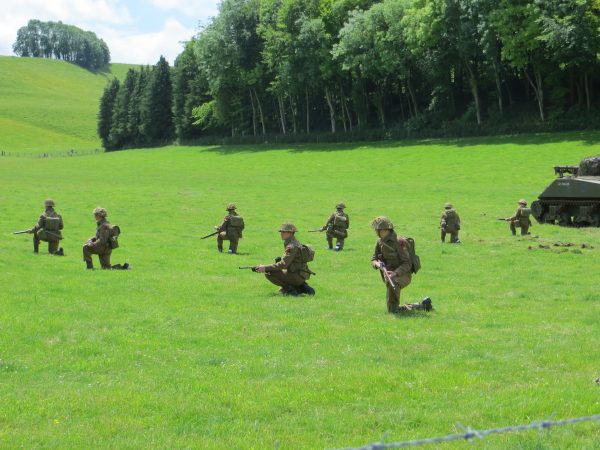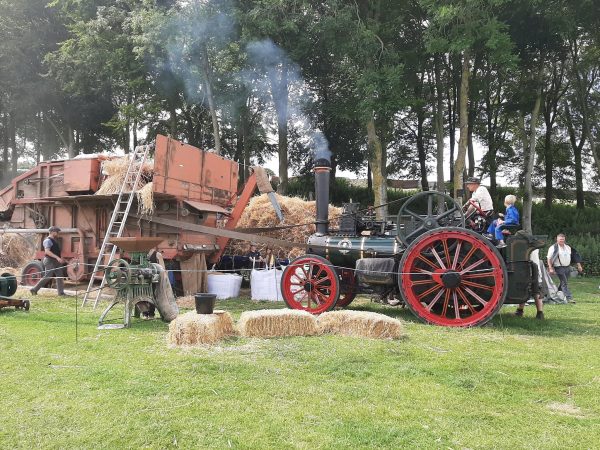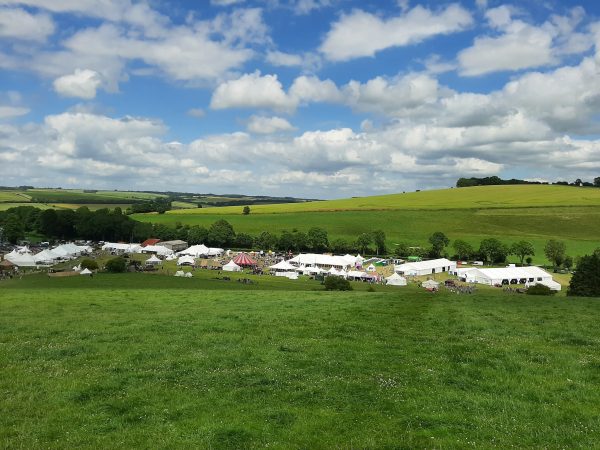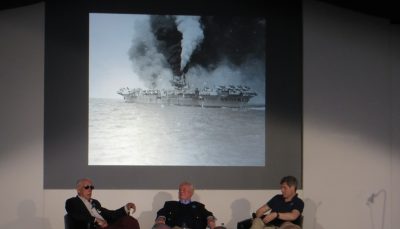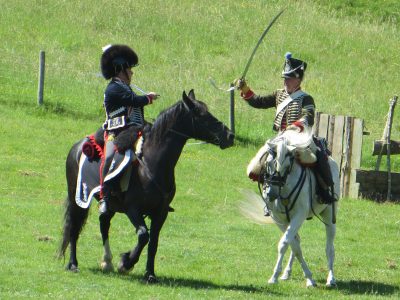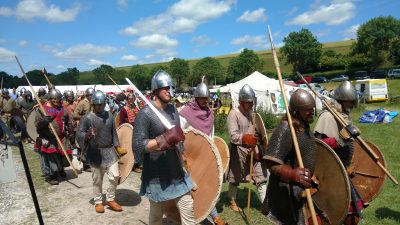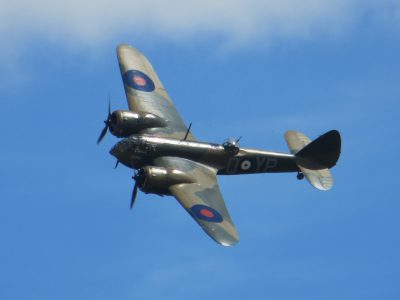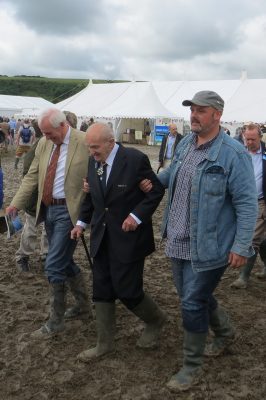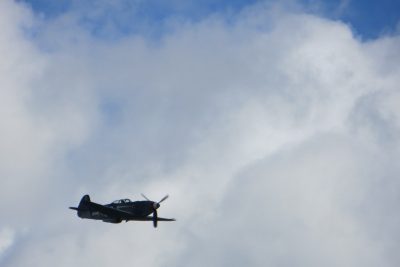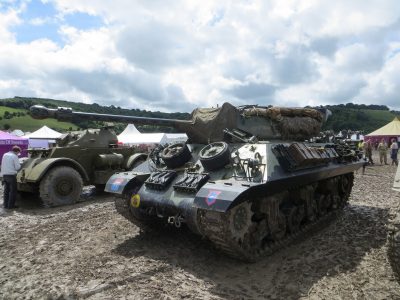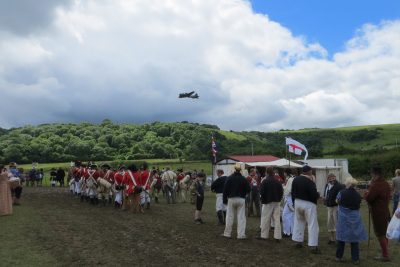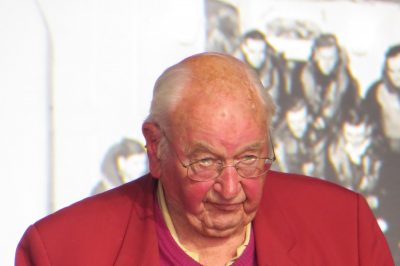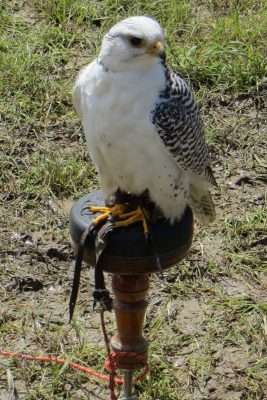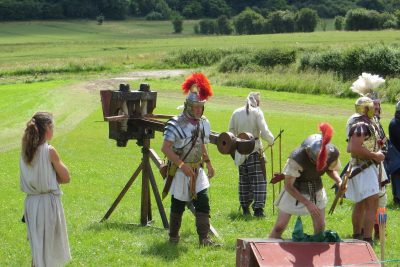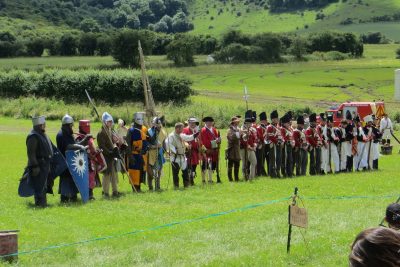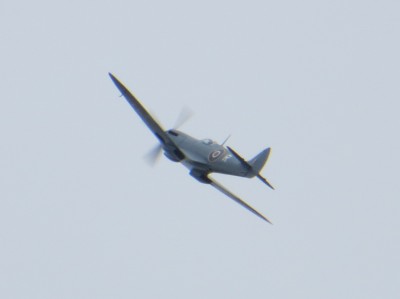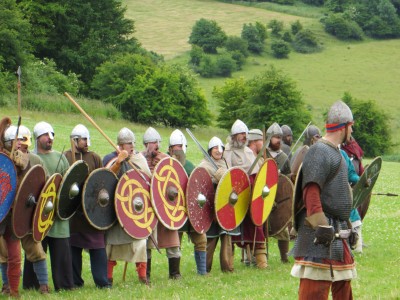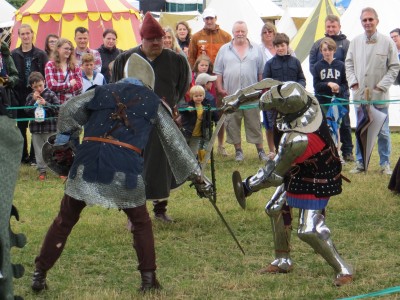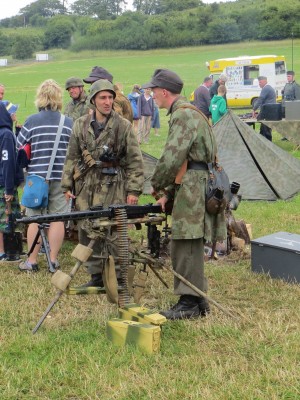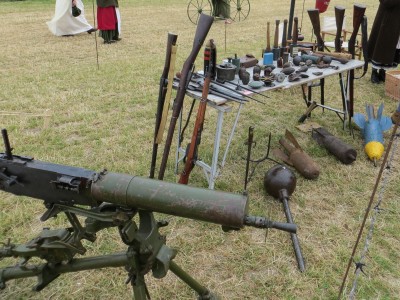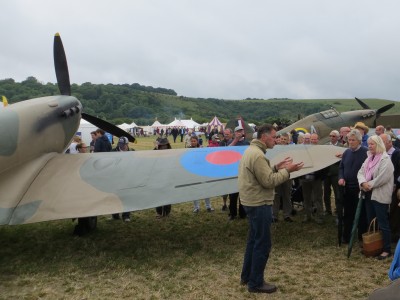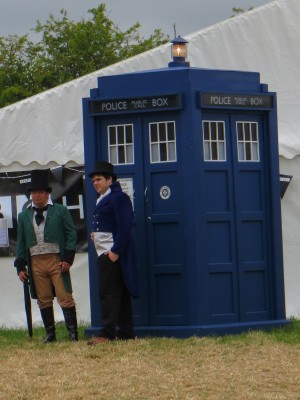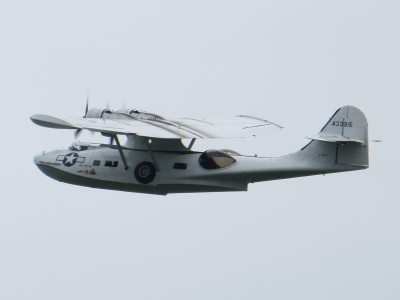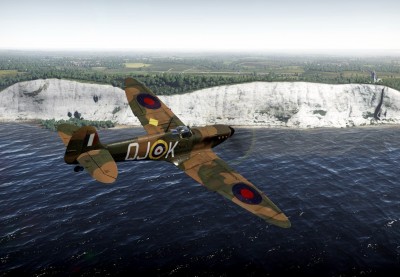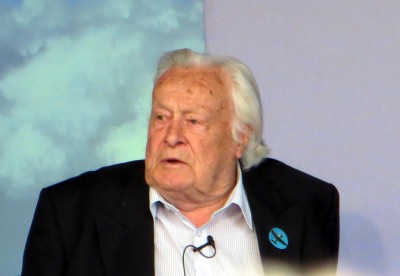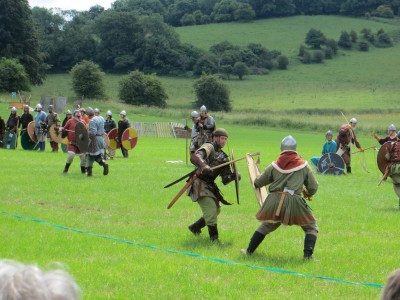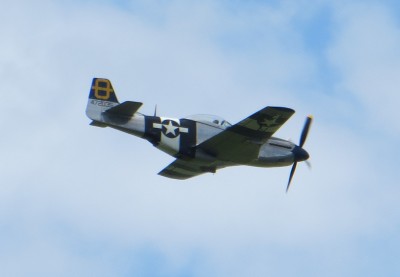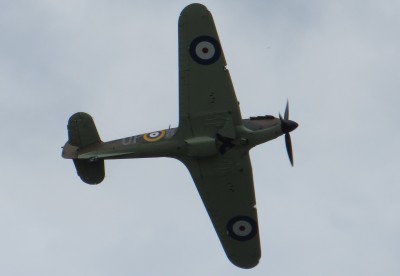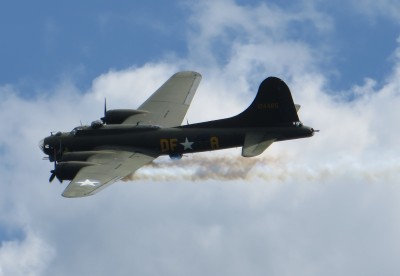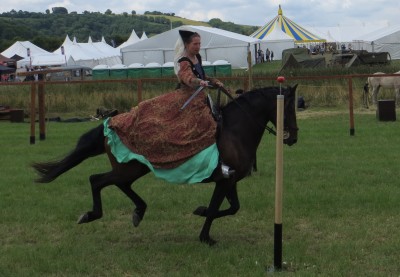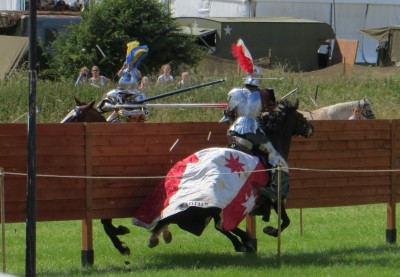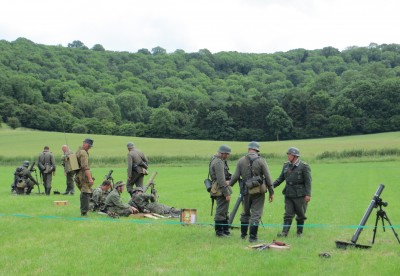I was streaming music while walking the dog, an assortment of reggae and dub Amazon had come up with based on my previous listening, and a really catchy tune came on. For some reason I couldn’t immediately check the phone to see what it was – probably trying to stop Lyra hurtling after some cat/squirrel/moped – and after I remembered later there didn’t seem to be a track history to consult. I’d forgotten all about it until the Chalke Valley History Festival.
Chalke Valley was excellent as ever with its combination of talks and living history – Al Murray, jousting, Ian Hislop, a Sherman tank, Michael Morpurgo, artillery firing – and we settled down to a spot of food with some suitably Second World War serenading, The Bluebirds swinging away with the Boogie Woogie Bugle Boy. As they launched into another song something clicked – it was the exact riff I’d been trying to track down. The lyrics sounded like they wanted to explain something to a Mister Shane, which fortunately was enough for Google to return the actual song – Bei Mir Bist Du Schön – and a bit more digging turned up the reggae version, For Me You Are by Prince Fatty and Hollie Cook.
Funny how things turn up in unexpected places. Charlie Higson was also at Chalke Valley (not unexpectedly, he’s a bit of a fixture) talking Good and Bad Kings, he has a podcast covering the History of the Monarchy, starting at the beginning, based on the old rhyme – Willy Willy Harry Stee. It’s a great listen, and while searching for it I found another podcast of his, Charlie Higson And Friends, talking classical music from Scala Radio. There’s an episode with the magnificent Bob Mortimer (including the joke “I used to play the triangle in a reggae band, but I got bored of it; it was the same ting every night…”), one of the things they covered was how, back in the day, you’d have to save up to buy an album, and when you did you’d really listen to it. Streaming is great in a lot of ways, especially for finding more music similar to previously played artists, but it’s all too easy to hit skip if something doesn’t immediately click.
That sent me off to my assortment of game launchers – Steam; Epic; Origin; Uplay; Glyph; Arc; GOG; Amazon Games; Derry & Toms; Flywheel, Shyster & Flywheel… Between giveaways, bundles, sales, free to play offerings and the like there’s more than enough to last several lifetimes already in my libraries so I decided I should settle down and give something a fair crack of the whip. Especially with storage to spare – a Rock, Paper, Shotgun piece had noted that Starfield specified an SSD as a minimum requirement, combined with falling prices that nudged me into grabbing a 1TB M2 drive, which I’m pretty sure is the first upgrade I’ve made to my current PC since getting it in February 2018, pretty staggering considering in the early 1990s I would’ve had to go through two complete systems in that time just to keep up with gaming demands.
There’d been a Humble Feel The Rhythm bundle a little while back that I picked up largely on the strength of Trombone Champ; it proved exactly as silly and joyful as it appeared from watching clips, though a bit of a one-note gag, ironically. The Wii and plastic instruments had been gathering dust for years so we finally donated them to charity, and though Beat Saber on the Oculus scratches the flailing-around-to-music itch it’s not the easiest to play around other people and/or dogs, so I had a go at a couple of others from the bundle; Beat Hazard 3 is a fun enough bullet hell shooter, but from a few runs doesn’t seem to have evolved terribly radically from the original I played back in 2010; Melody’s Escape 2 is a neat Audiosurf-esque run-to-the-rhythm game, but the couple of tracks I tried didn’t quite seem to click with the beat (or at least my interpretation of it, which may have been the bit at fault). Things weren’t entirely going to plan in the “giving something a fair crack of the whip” department, but another Humble offering came to the rescue – Chernobylite from the Survival Instinct bundle. A first person shooter along the lines of the S.T.A.L.K.E.R. series with crafting elements and base building could hardly be more in my wheelhouse, and I got very into it. There’s an intriguing story you piece together as you explore, some interesting mechanics that play with time and memory, the early missions have that balance where every round of ammunition is precious but a bit of caution and stealth allows you to tackle your objectives without too much frustration. I have stalled, though; in so many games there comes a point where the systems that were new and exciting at the start of things become a bit of a chore. Building up a large empire in a Civilisation or Total War game and having to go around all the cities managing building work and population happiness; the later missions and quests in RPGs when you can’t even be bothered to loot opponents unless they’re carrying a +7 Vorpal Sword of Lordly Might or a Nuclear Gatling Laser. I’ve built up a base combining comfy beds, mood lighting, and entertainment facilities with extensive workshops and a small nuclear reactor, crafted all the available weapons, and recruited a posse; there’s a Mass Effectish final heist where your team can help, and there are a number of further clues and items that I could track down for further assistance, but the missions to gather them are getting a little same-y with increasingly well armoured enemies resistant to stealth attacks narrowing down the combat style. I might get back to it, I’d like to see how the story develops, but I got a little distracted.
The Steam Summer Sale popped up, pretty low key this time around without some sort of meta-event or mini-game wrapped around it, but it’d be rude not to have a bit of a browse. Melmoth mentioned he’d been enjoying Vampire Survivors, so for less than a fiver I thought I’d give it a go. I mean it’s only £4 full price, but there was the DLC as well! It’s proved to be rather addictive. An “Inverse Bullet Hell” shooter where you acquire and upgrade a range of weapons until filling the screen with improbable explosions it has persistent upgrades and a mountain of unlocks to keep you coming back and trying out different combinations of characters and weapons. It doesn’t feel like I’ve spent longer with it than Chernobylite, but apparently my play time is almost double. I’ve unlocked a good chunk of the options now, and some of the remaining ones do feel a little like hard work, but I might well pop back in for a run or two now again; I’ve also picked up Halls of Torment as recommended for a similar sort of experience, I think I’ll keep that one in the library to come back to. Plenty to keep things ticking along until one or all of Starfield, the full Baldur’s Gate 3 release or Cyberpunk 2077: Phantom Liberty.
